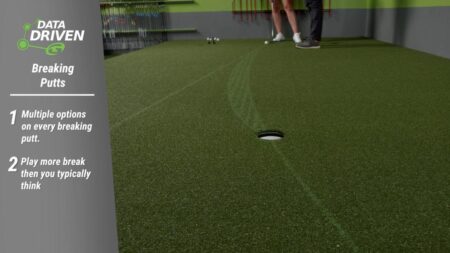In the unpredictable world of golf, mastering shot shape control can be the difference between a winning round and a missed opportunity. Whether you aim to curve the ball gently from right to left with a draw or push it from left to right with a fade, achieving these shots consistently requires more than luck-it demands technique, precision, and understanding. This article explores the essential tips and professional insights on how to hit a draw or fade on command, empowering golfers of all skill levels to take greater control of their game.
Mastering Grip and Stance Adjustments to Shape Your Shot Effectively
Controlling your golf ball’s flight begins with subtle yet deliberate changes to how you grip and position yourself. A strong grip-where the hands are rotated slightly to the right on the club for a right-handed player-promotes a draw by encouraging an inside-to-out swing path, which causes the ball to curve left. Conversely, a weaker grip, with the hands rotated to the left, assists in hitting a fade by promoting an outside-to-inside swing path, resulting in a rightward ball flight. Along with gripping, adjusting your stance is equally crucial. For a draw, position the ball slightly back in your stance and close your feet to align right of the target, encouraging a path that moves inward through impact. For a fade, move the ball forward and open your stance left of the target to facilitate a swing that cuts across the ball from outside to inside.
- Draw Grip: Strong grip with knuckles visible on the left hand
- Fade Grip: Weak grip with fewer knuckles visible
- Draw Stance: Feet closed to the target, ball back
- Fade Stance: Feet open to the target, ball forward
| Adjustment | Draw | Fade |
|---|---|---|
| Grip | Strong | Weak |
| Ball Position | Slightly Back | Slightly Forward |
| Stance | Closed | Open |
Mastering these fundamentals requires practice, but the payoff is remarkable control. By combining these grip and stance tweaks, players gain the ability to dictate the ball’s flight path with confidence, adding a critical weapon to their on-course arsenal. Not only does this understanding enhance shot-shaping precision, but it also boosts overall swing consistency and reduces errant mishits caused by improper alignment or grip pressure.
Leveraging Swing Path and Clubface Control for Consistent Draws and Fades
Mastering the nuances of swing path and clubface control is paramount to producing reliable shot shapes. A draw is typically achieved by swinging the club along an inside-to-outside path while keeping the clubface slightly closed relative to that path. Conversely, a fade results from an outside-to-inside swing path with the clubface marginally open to that path. These directional controls at impact influence the ball’s spin axis, shaping its curvature through the air. Understanding this dynamic empowers you to subtly adjust your setup and swing mechanics, transforming your shot-shaping capabilities from guesswork to precision.
Consider these key factors when aiming for a consistent draw or fade:
- Swing path: The lateral direction your clubhead moves at impact.
- Clubface angle: The orientation of the clubface relative to the swing path.
- Body alignment: Your stance and shoulder alignment influence swing path.
- Grip pressure: Tension affects clubface rotation and control.
| Shot Shape | Swing Path | Clubface Angle | Resulting Spin |
|---|---|---|---|
| Draw | Inside-to-Out | Closed to path | Right-to-Left ball flight |
| Fade | Outside-to-In | Open to path | Left-to-Right ball flight |
In Retrospect
Mastering the ability to hit a draw or fade on command is a valuable skill that can significantly enhance a golfer’s versatility and course management. By understanding the fundamentals of grip, stance, and swing path, and through consistent practice, players can confidently shape their shots to navigate various course challenges. Whether aiming to avoid hazards, exploit favorable wind conditions, or achieve better accuracy, controlling ball flight remains a crucial component of competitive play. Aspiring golfers are encouraged to apply these techniques diligently, ensuring that their rounds become not only more strategic but also more rewarding.








